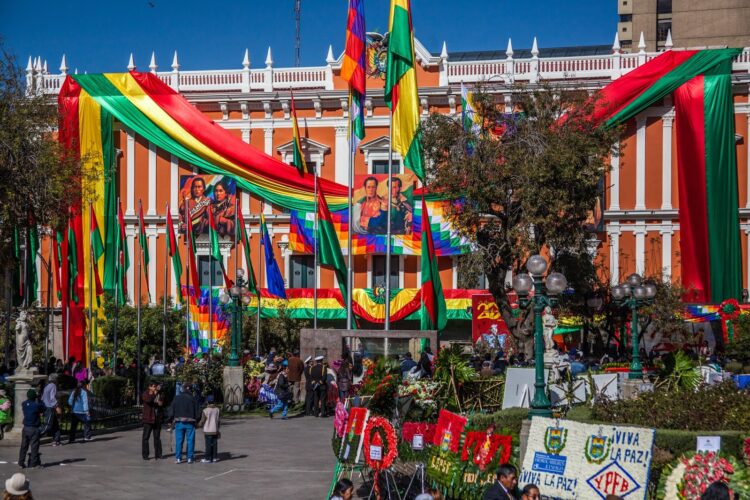Bolivia celebrates its Independence Day on August 6, marking the day it broke free from Spanish rule in 1825. This holiday caps off a long 16-year fight for freedom that kicked off with the Chuquisaca Revolution back in 1809.
The struggle for independence wasn’t easy. It involved many uprisings and battles throughout Upper Peru, which we now call Bolivia. Two key figures in this fight were Simón Bolívar and Antonio José de Sucre. They didn’t just help Bolivia – they were instrumental in freeing several other South American countries too. After some crucial battles, Bolivia finally declared itself independent on August 6, 1825. They chose their name as a tribute to Simón Bolívar.
Bolivians refer to their Independence Day as “Día de la Patria” and they know how to celebrate! Cities all over the country, especially La Paz, come alive with colorful parades. You’ll see traditional music, dancing, and costumes everywhere. It’s not all fun and games though – government officials and military big shots attend formal ceremonies to honor those who fought for freedom. Communities also use this time to show off Bolivia’s rich and diverse heritage through cultural performances, including indigenous traditions.
The festivities don’t stop there. You’ll see military displays, gun salutes, civic events, outdoor performances, carnivals, and fireworks lighting up the sky. The Bolivian flag, with its coat of arms on red, yellow, and green stripes, is proudly displayed everywhere during these celebrations.
Bolivia, or to use its full name, the Plurinational State of Bolivia, is right in the middle of South America, completely surrounded by land. It’s bordered by Brazil to the north and east, Paraguay to the southeast, Argentina to the south, Chile to the southwest, and Peru to the west. Size-wise, it’s pretty impressive – it’s the 28th largest country in the world and the 5th largest in South America, covering an area of 1,098,581 square kilometers (424,164 square miles).
The country’s geography is incredibly varied. They have the Andes Mountains, the Gran Chaco, and parts of the Amazon rainforest all within its borders. This diverse landscape means Bolivia is home to a wide range of plants and animals across different ecosystems, from the high-altitude Altiplano to tropical savannas.
As Bolivia approaches its 200th birthday in 2025, the August 6 celebration continues to bring Bolivians together, filling them with pride and appreciation for their culture. Every year, this event gives people a chance to look back on how far the country has come and think about where it’s headed next.









